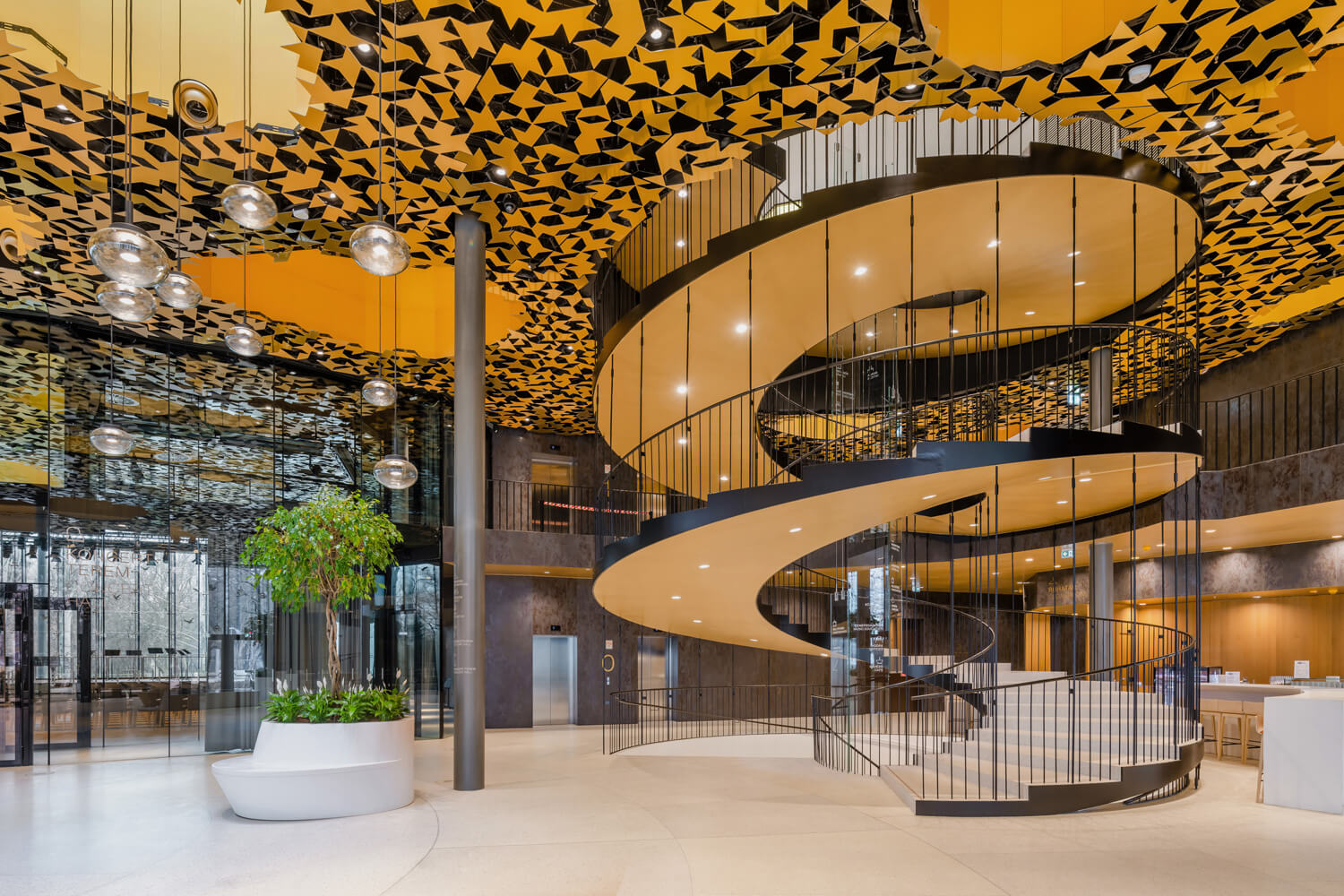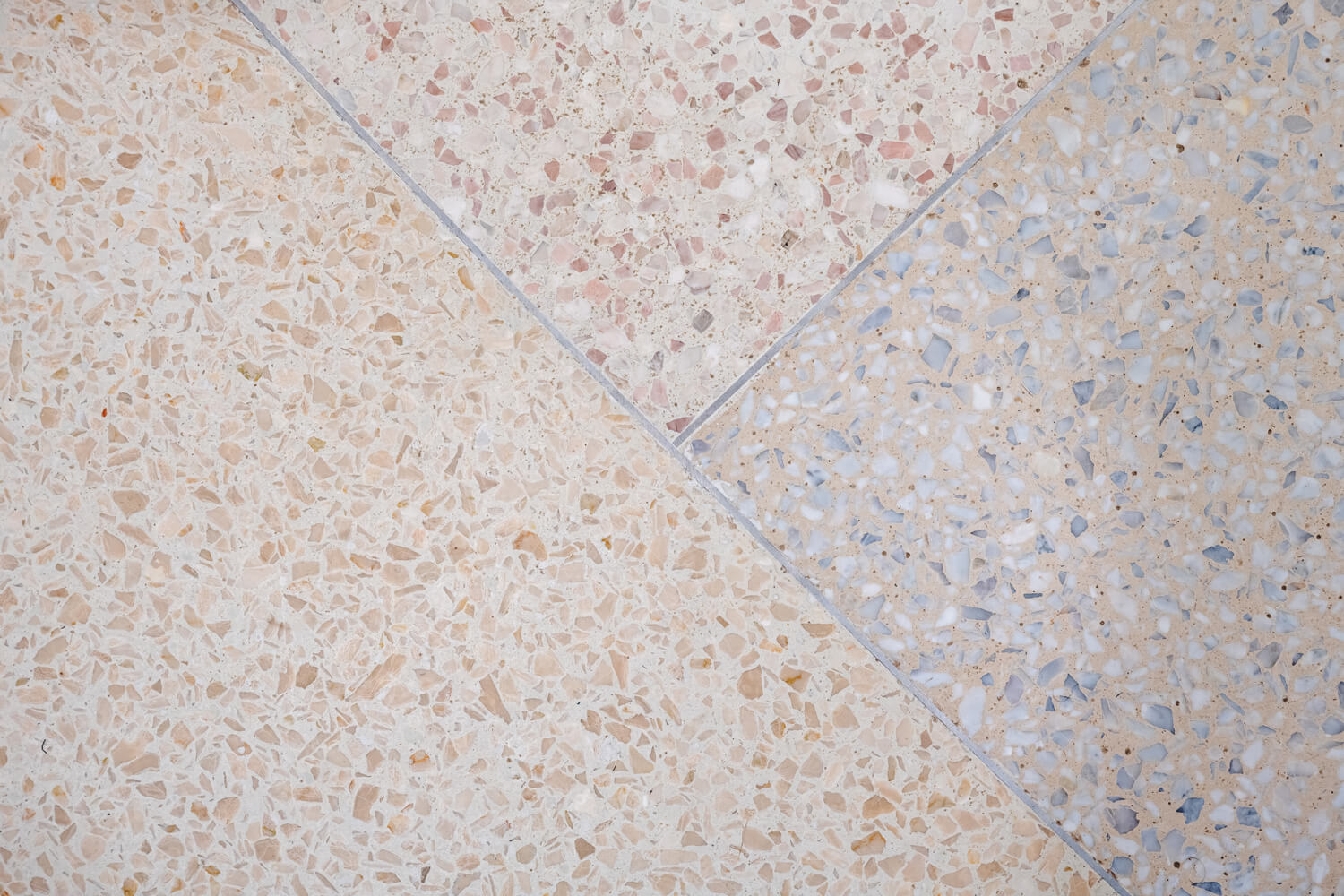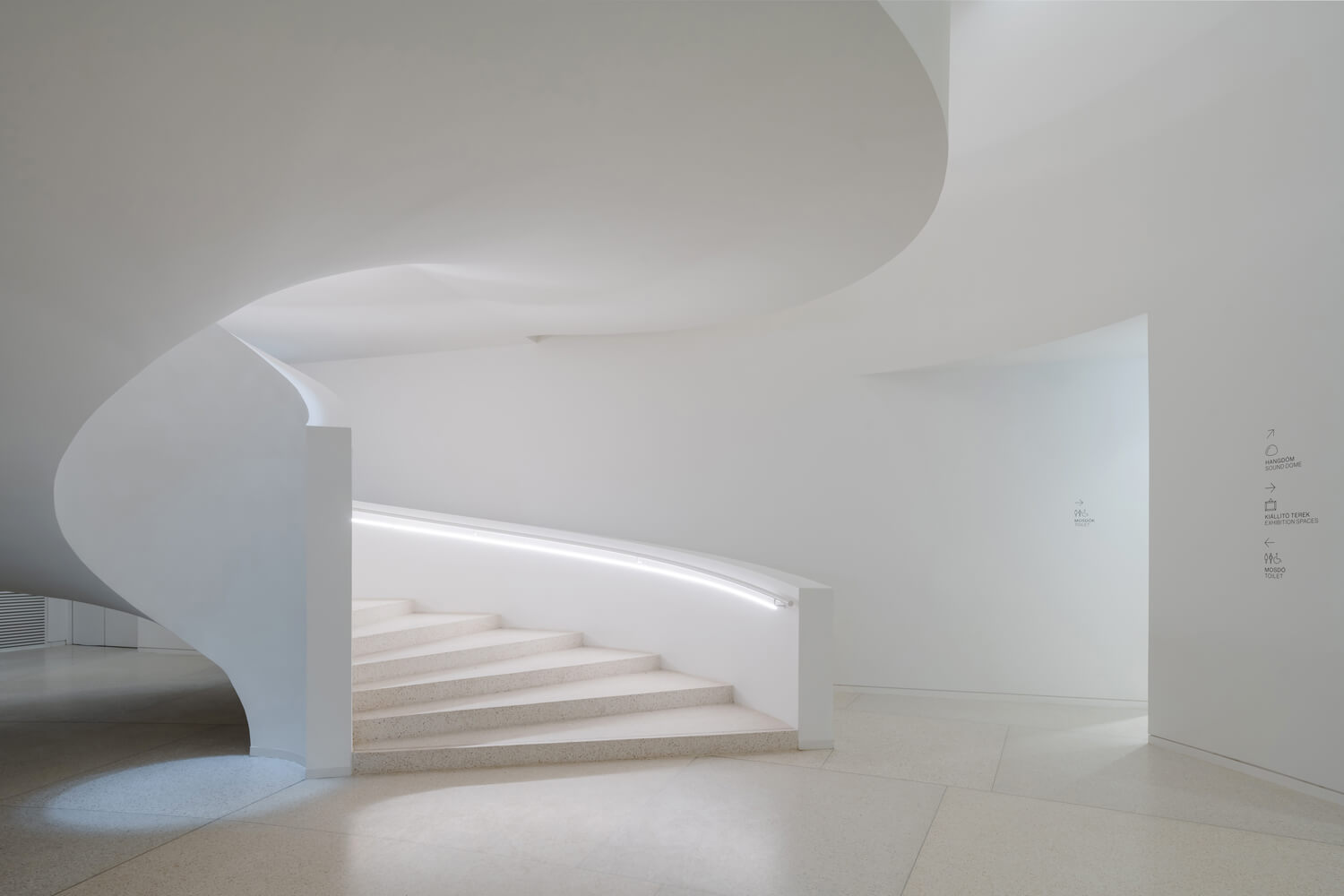
Budapest House of Music is a project designed by architect Sou Fujimoto which brings together music, architecture and nature in a new cultural hub. Ideal Work® Lixio®+ and Sassoitalia® were chosen for the building’s internal and external surfaces respectively, providing successful landscape integration and extreme elegance.

Designed by well-known architect Sou Fujimoto, Budapest House of Music is an ambitious architectural project that is part of a more extensive European cultural development plan: the Liget Budapest Project. The main aim of the plan is to transform the city’s cultural experience and create new leisure opportunities and green areas.
With the House of Music, Fujimoto wanted to present the experience of music through the interaction between nature, sound and light. Spread over an area of 9,000 m2, the building includes concert halls, exhibition spaces and an open-air stage. On the ground floor there are two performance halls. The first floor incorporates different rooms including a library and several work spaces, all connected by a spiral staircase. The underground levels host a wide exhibition space dedicated to the history of European and Hungarian music. By harmoniously combining landscape, architecture and exhibition areas under the central presence and overwhelming power of music, Fujimoto’s House of Music exceeds every limit in that it creates a fluid environment where everything is connected and in tune with the rest.

The building’s roof deserves particular attention: it is corrugated and interspersed with openings of variable size reminiscent of craters. It represents the sound waves produced by the vibration of an object. Over 100 holes in the structure allow trees to pass through, letting light enter the underground floors of the building. The feeling conveyed by this particular design is of walking under the trees’ foliage, a perception further reinforced by the presence of over 30,000 tree leaves embedded in the false ceiling and attached to a steel structure made of 1,000 honeycomb-arranged items. Such innovative decoration also projects its charming reflections onto the floor, adding to the building’s overall state-of-the-art style.

Ideal Work® Lixio®+ – a glossy, elegant marble-based solution – was chosen for the internal surfaces of the House of Music. Applied here in three colour variants, Lixio®+ is a concrete surface that recalls the ancient terrazzo floor tradition. Combining aesthetics with great technical performances such as resistance to heavy foot traffic and easy maintenance, Lixio®+ proves to be the perfect solution for this project. To maintain visual continuity between internal and external surfaces, the outdoor area was covered with Sassoitalia®, an Ideal Work® solution that evokes the ancient Italian tradition of ‘washed pebble’. Sassoitalia® is particularly suitable for historical and natural contexts as the employment of locally sourced materials allows for an excellent integration with the landscape. The prominence of aggregates makes the surface rough and therefore slip-resistant, as well as extremely durable over time.

The building’s hemispheric sound dome is not to be missed. It is inspired by the 20th century composer Karlheinz Stockhausen, known for having created the first 3D auditory experience in the form of a spherical concert hall at the 1970 Universal Exhibition in Osaka, Japan. Designed for a completely immersive experience, it allows 60 visitors at a time to enjoy 360° surround sound, emitted from every direction by over 30 speakers, which create nearly holographic sound walls.
Given its strong connection to nature, Budapest House of Music could not but stand out for its sustainability: 120 heat pumps were installed at a depth of 100 m to supply geothermic energy to the entire building, whilst the remaining demand of electricity is fulfilled by an additional source of renewable energy. The cooling system is equally interesting: a long-distance device employs the extra energy created by a nearby ice rink during the Summer. These sustainable, environmentally-friendly systems have earned the project BREEAM certification.
Date: 2022
Place: Budapest, Hungary
Architects: Sou Fujimoto – M-Teampannon
ph: Mihály Nagy, György Palkó


























